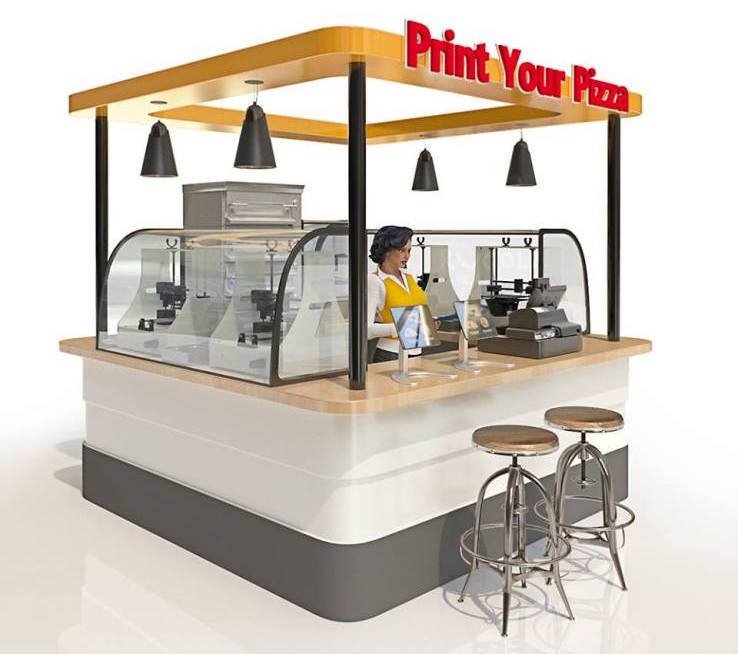
Startup BeeHex has raised USD$1M to continue development of its pizza printing machine, the Chef 3D.
I’ve written about this company several times previously and followed their fascinating transformation from a company that originally intended on producing a consumer-style 3D pizza printer that might exist in everyone’s kitchens into something quite different today.
Today they’re definitely focused on a market that likely exists. Their updated website explains:
BeeHex is a B2B company. We design and build commercial 3D food printers and fresh-food producing robots – all controlled by BeeHex software and mobile app.
As I wrote previously, the company immediately bumped into challenges with the original strategy and through good research identified a viable secondary strategy: industrial pizza printing. They discovered that current approaches are stricken with unreliable and expensive manual labor and could be vastly improved if automated through their equipment. From that realization, they have proceeded forward in their development.
And apparently have attracted the interest of serious investors. The amount they received, USD$1M, is not particularly large in terms of investment, but it is considered a “seed” round. This is an amount signaling that the project is deemed viable by investors and needs money to flesh out the project.
As such, the company plans to launch their first beta-test machines sometime this year. Their target is any high-volume pizza-making operations, such as frozen pizza manufacturers, grocery chains, or even large-scale event venues, like stadiums.
They’ve also made a strategic move, according to TechCrunch:
It recently moved its research and development facilities to Columbus, Ohio, a region that is home to some 170 food and beverage manufacturers, especially bakeries according to economic development office Columbus2020.
While this is pretty good news for BeeHex, there is a very valuable lesson here for others in the 3D printer business: a serious pivot can save your company.
A pivot is a sudden change in strategy, often forced by a crisis. In such an event, the company must identify new ways, markets or approaches to create and sell their products or even components of their product, because the original way wasn’t going to work. Pivots happen very frequently in startups who don’t fully understand what they’re getting into. Sometimes the pivot doesn’t save things, but often it does.
In the case of BeeHex, it remains to be seen, but things look positive so far.
But the lesson here is for those developing desktop 3D printers who find their product isn’t selling – and there are an increasing number of such scenarios as the market is saturated.
My advice: consider a pivot as BeeHex has done. Take stock of your situation; identify the best parts of your project and try to figure out new ways to deploy them. Change your business model; strip down to the essential features and focus on that instead; partner with someone bigger; or something else.
If you have something good, make it useful for someone.
Via BeeHex and TechCrunch

